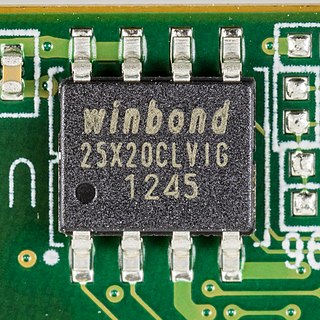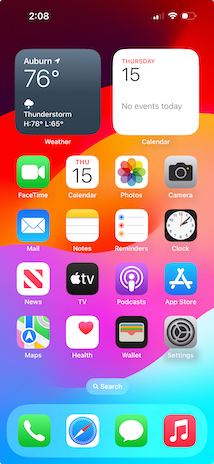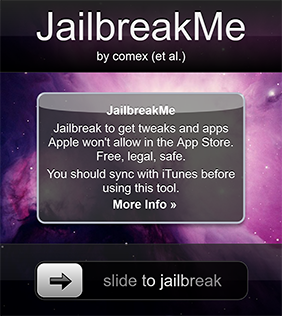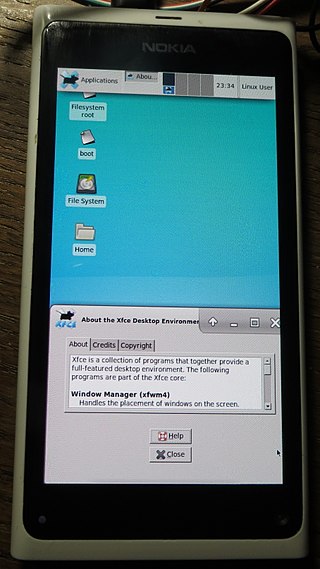
In computing, firmware is software that provides low-level control of computing device hardware. For a relatively simple device, firmware may perform all control, monitoring and data manipulation functionality. For a more complex device, firmware may provide relatively low-level control as well as hardware abstraction services to higher-level software such as an operating system.

Privilege escalation is the act of exploiting a bug, a design flaw, or a configuration oversight in an operating system or software application to gain elevated access to resources that are normally protected from an application or user. The result is that an application with more privileges than intended by the application developer or system administrator can perform unauthorized actions.
The boot ROM is a type of ROM that is used for booting a computer system. There are two types: a mask boot ROM that cannot be changed afterwards and a boot EEPROM, which can contain an UEFI implementation.

George Francis Hotz, alias geohot, is an American security hacker, entrepreneur, and software engineer. He is known for developing iOS jailbreaks, reverse engineering the PlayStation 3, and for the subsequent lawsuit brought against him by Sony. From September 2015 onwards, he has been working on his vehicle automation machine learning company comma.ai. Since November 2022, Hotz has been working on tinygrad, a deep learning framework.

The iPod Touch is a discontinued line of iOS-based mobile devices designed and formerly marketed by Apple Inc. with a touchscreen-controlled user interface. As with other iPod models, the iPod Touch can be used as a portable media player and a handheld gaming device, but can also be used as a digital camera, a web browser, for email and messaging. It is nearly identical in design to the iPhone, and can run most iPhone third-party apps from the App Store, but it connects to the Internet only through Wi-Fi and uses no cellular network data, as it lacks a cellular modem.

iOS is a mobile operating system developed by Apple exclusively for its smartphones. It was unveiled in January of 2007 for the first-generation iPhone, launched in June 2007.
iOS jailbreaking is the use of a privilege escalation exploit to remove software restrictions imposed by Apple on devices running iOS and iOS-based operating systems. It is typically done through a series of kernel patches. A jailbroken device typically permits root access within the operating system and provides the right to install software unavailable through the App Store. Different devices and versions are exploited with a variety of tools. Apple views jailbreaking as a violation of the end-user license agreement and strongly cautions device owners not to try to achieve root access through the exploitation of vulnerabilities.
Rooting is the process by which users of Android devices can attain privileged control over various subsystems of the device, usually smartphones and tablets. Because Android is based on a modified version of the Linux kernel, rooting an Android device gives similar access to administrative (superuser) permissions as on Linux or any other Unix-like operating system such as FreeBSD or macOS.
In computing, a SHSH blob is a digital signature that Apple generates and uses to control the iOS versions that users can install on their iOS devices generally only allowing the newest iOS version to be installable. Apple's public name for this process is System Software Authorization. The term “SHSH blob” is unofficial and based on abbreviations for signed hash and binary large object. An alternative term, ECID SHSH, refers to the device's ECID, a unique identification number embedded in its hardware)

JailbreakMe is a series of jailbreaks for Apple's iOS mobile operating system that took advantage of flaws in the Safari browser on the device, providing an immediate one-step jailbreak, unlike more common jailbreaks, such as Blackra1n and redsn0w, that require plugging the device into a computer and running the jailbreaking software from the desktop. JailbreakMe included Cydia, a package management interface that serves as an alternative to the App Store. Although it does not support modern devices, it can still be used and the site is up.
greenpois0n is a name shared by a series of iOS jailbreaking tools developed by Chronic Dev Team that use exploits to remove software restrictions on iPhones, iPads, iPod Touches, and Apple TVs. Greenpois0n's initial release in October 2010 jailbroke iOS 4.1, and its second version in February 2011 jailbroke iOS 4.2.1 as well as iOS 4.2.6 on CDMA iPhones. The second generation of the tool, greenpois0n Absinthe, was developed with iPhone Dev Team members and jailbroke iOS 5.0.1 in January 2012, and a second version jailbroke iOS 5.1.1 in May 2012.

The hacking of consumer electronics is a common practice that users perform to customize and modify their devices beyond what is typically possible. This activity has a long history, dating from the days of early computer, programming, and electronics hobbyists.
Mobile security, or mobile device security, is the protection of smartphones, tablets, and laptops from threats associated with wireless computing. It has become increasingly important in mobile computing. The security of personal and business information now stored on smartphones is of particular concern.

Android software development is the process by which applications are created for devices running the Android operating system. Google states that "Android apps can be written using Kotlin, Java, and C++ languages" using the Android software development kit (SDK), while using other languages is also possible. All non-Java virtual machine (JVM) languages, such as Go, JavaScript, C, C++ or assembly, need the help of JVM language code, that may be supplied by tools, likely with restricted API support. Some programming languages and tools allow cross-platform app support. Third party tools, development environments, and language support have also continued to evolve and expand since the initial SDK was released in 2008. The official Android app distribution mechanism to end users is Google Play; it also allows staged gradual app release, as well as distribution of pre-release app versions to testers.

iPhone OS 2 is the second major release of the iOS mobile operating system developed by Apple Inc., being the successor to iPhone OS 1. It was the first version of iOS to support third-party applications via the App Store. iPhone OS 2.2.1 is the final version of iPhone OS 2. It was succeeded by iPhone OS 3 on June 17, 2009.
The Pangu Team, is a Chinese programming team in the iOS community that developed the Pangu jailbreaking tools. These are tools that assist users in bypassing device restrictions and enabling root access to the iOS operating system. This permits the user to install applications and customizations typically unavailable through the official iOS App Store.
Custom firmware, also known as aftermarket firmware, is an unofficial new or modified version of firmware created by third parties on devices such as video game consoles, mobile phones, and various embedded device types to provide new features or to unlock hidden functionality. In the video game console community, the term is often written as custom firmware or simply CFW, referring to an altered version of the original system software inside a video game console such as the PlayStation Portable, PlayStation 3, PlayStation Vita/PlayStation TV, PlayStation 4, Nintendo 3DS ,Wii U and Nintendo Switch. Installing custom firmware on some devices requires bootloader unlocking.
PP Jailbreak, also commonly known as PP, PP25 App or PP25 Jailbreak, is a term describing a free Chinese app containing tools capable of jailbreaking iOS 8 devices, except for Apple TV. Eligible products include: iPod Touch, iPhone and iPad. This app was developed by a Chinese iOS hacking community known as PP Assistant. It was first released on January 19, 2015

The Apple T2 security chip is a system on a chip "SoC" tasked with providing security and controller features to Apple's Intel based Macintosh computers. It is a 64-bit ARMv8 chip and runs bridgeOS. T2 has its own RAM and is essentially a computer of its own, running in parallel to and responding to requests by the main computer that the user interacts with.
The iPhone's hardware is designed by Apple Inc. Apple directly sub-contracts hardware production to external OEM companies, maintaining a high degree of control over the end product.









